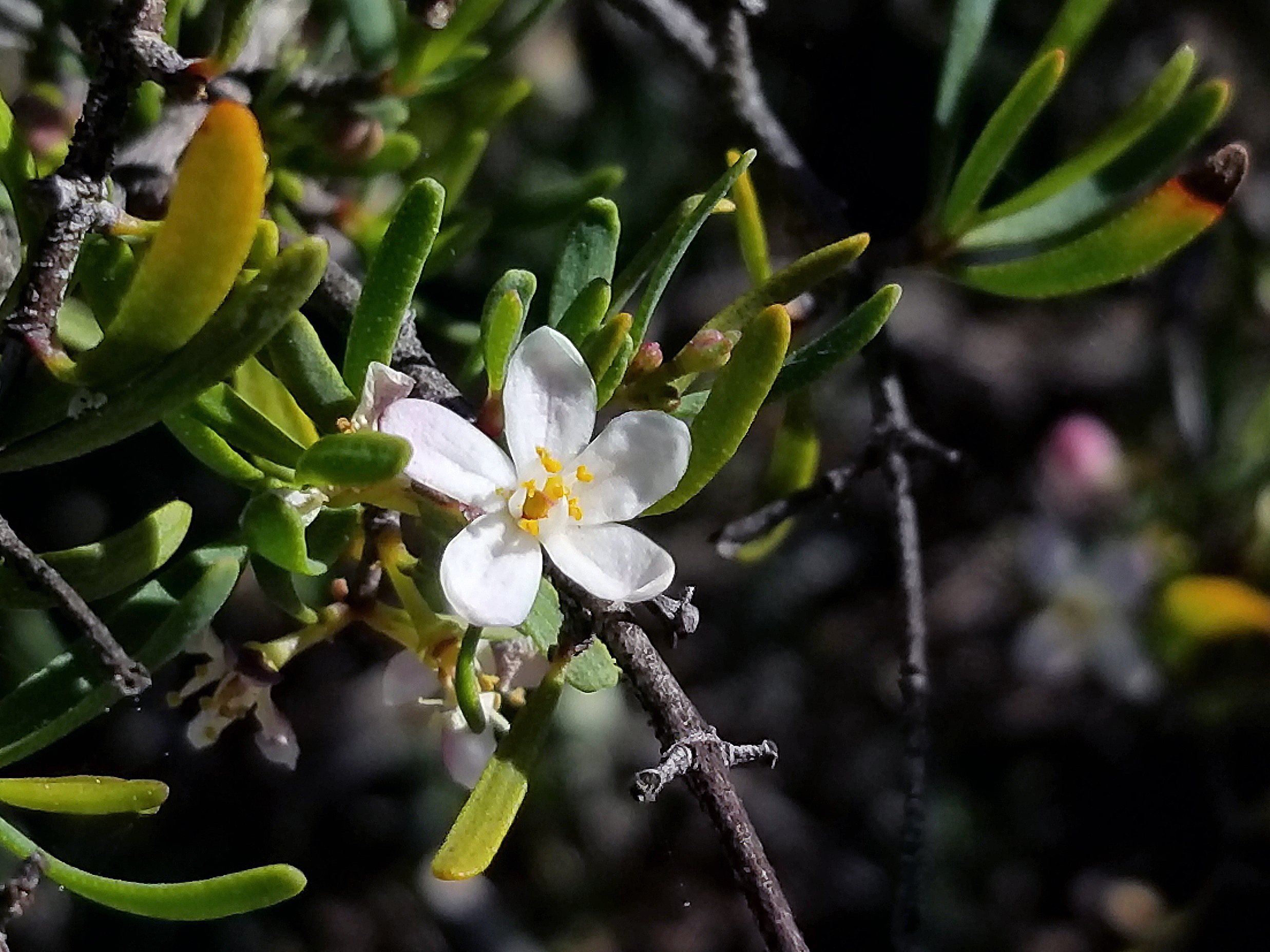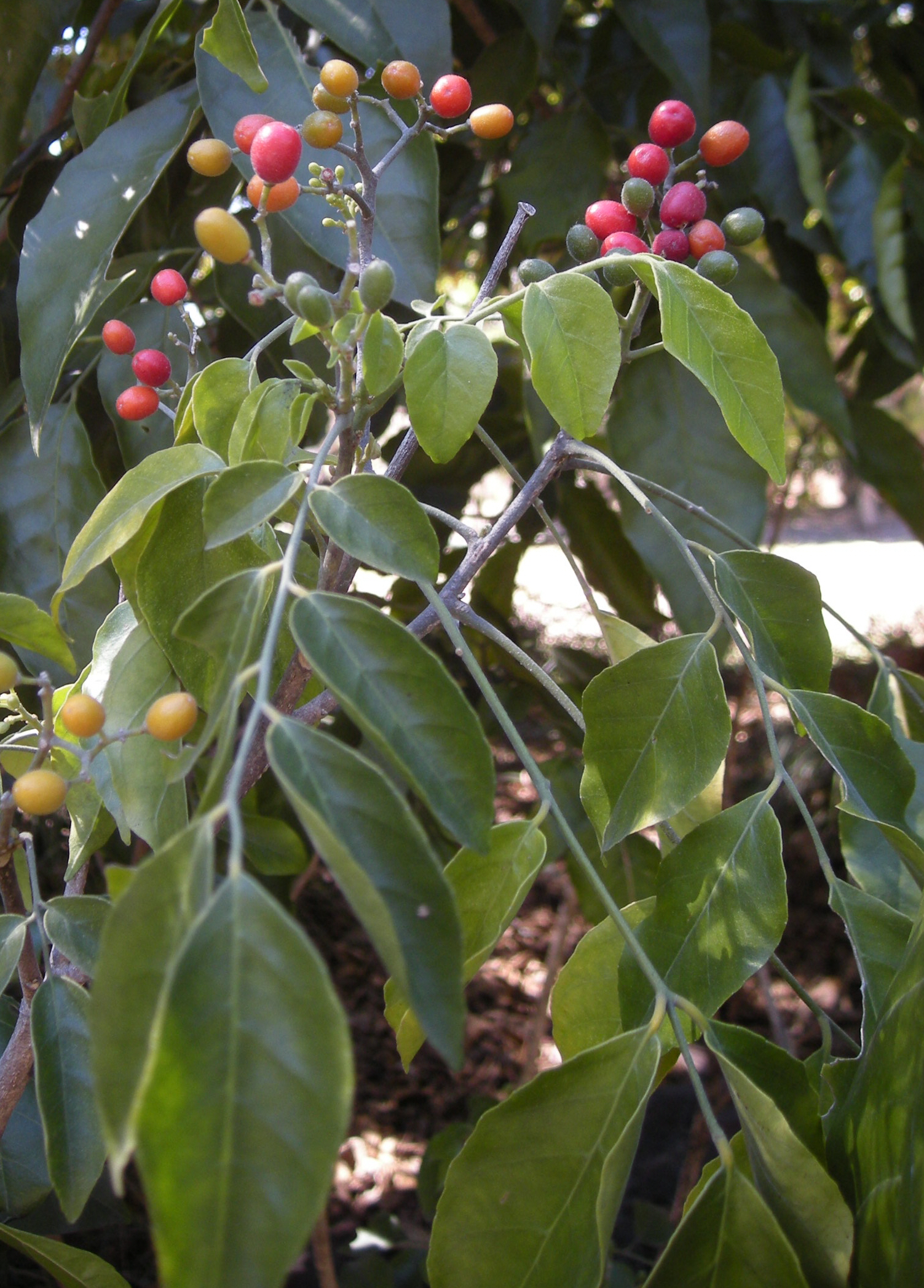|
Amyridoideae
''Amyridoideae'' is a subfamily of the family Rutaceae. The circumscription of the family has varied considerably. A 2014 classification placed a large proportion of the genera in the family Rutaceae in Amyridoideae. A more recent 2021 classification includes only three genera. Taxonomy In 2012, based on molecular phylogenetic methods, Groppo et al. divided Rutaceae into two subfamilies, a small Cneoroideae and a very large subfamily Rutoideae ''s.l.'' for the all the remaining genera. A 2014 classification by Morton and Telmer added the subfamily Aurantioideae, and split the remaining Rutoideae ''s.l.'' into a smaller Rutoideae and a much larger Amyridoideae ''s.l.'', containing most of the genera Engler had placed in Rutoideae in 1896. Until 2021, molecular phylogenetic approaches had only sampled between 20% and 40% of the genera of Rutaceae. A 2021 study by Appelhans et al. sampled almost 90% of the genera. The two main clades recognized by Groppo et al. in 2012 were upheld, but ... [...More Info...] [...Related Items...] OR: [Wikipedia] [Google] [Baidu] |
Rutaceae
The Rutaceae is a family, commonly known as the rueRUTACEAE in BoDD – Botanical Dermatology Database or family, of s, usually placed in the order . Species of the family generally have s that divide into four or five parts, usually w ... [...More Info...] [...Related Items...] OR: [Wikipedia] [Google] [Baidu] |
Rutoideae
Rutoideae is a flowering plant subfamily in the family Rutaceae. The subfamily has had varying circumscriptions. In a 2012 classification of the family it was one of only two subfamilies and contained most of the genera, whereas in a 2021 classification it has only five genera. Taxonomy In 1896, Engler published a division of the family Rutaceae into seven subfamilies. Rutoideae was one of the larger subfamilies. Engler's division into subfamilies largely relied on the characteristics of the fruit, as did others used until molecular phylogenetic methods were applied, which showed that Rutoideae cannot be clearly differentiated from other members of the family based on fruit. In 2012, Groppo et al. divided Rutaceae into only two subfamilies, a small Cneoroideae, and a greatly enlarged subfamily Rutoideae ''s.l.'' with all the remaining genera. A 2014 classification by Morton and Telmer split this circumscription of Rutoideae into a smaller Rutoideae and a much larger Amyridoideae ' ... [...More Info...] [...Related Items...] OR: [Wikipedia] [Google] [Baidu] |
Cneoridium
''Cneoridium'' is a monotypic genus in the citrus family which contains the single species ''Cneoridium dumosum'', commonly known as bushrue or coast spice bush. This perennial, evergreen shrub is native to the coast of southern California and Baja California, thriving in hot, dry conditions. This plant is characterized by a distinctive citrusy aroma and small, white flowers that appear from winter to spring. The flowers eventually become round berries that resemble a miniature version of the common citrus fruit. Widely known and utilized by the indigenous peoples for centuries, this species was first discovered to Western science by Thomas Nuttall, on his trip to San Diego. Today this species is listed as imperiled, with some of its habitats threatened by coastal development, urbanization, military operations and fire suppression. It has also found its way into horticultural circles in the regions where it is native, providing gardeners with a low-maintenance shrub that gives ... [...More Info...] [...Related Items...] OR: [Wikipedia] [Google] [Baidu] |
Genera
Genus ( plural genera ) is a taxonomic rank used in the biological classification of living and fossil organisms as well as viruses. In the hierarchy of biological classification, genus comes above species and below family. In binomial nomenclature, the genus name forms the first part of the binomial species name for each species within the genus. :E.g. ''Panthera leo'' (lion) and ''Panthera onca'' (jaguar) are two species within the genus '' Panthera''. ''Panthera'' is a genus within the family Felidae. The composition of a genus is determined by taxonomists. The standards for genus classification are not strictly codified, so different authorities often produce different classifications for genera. There are some general practices used, however, including the idea that a newly defined genus should fulfill these three criteria to be descriptively useful: # monophyly – all descendants of an ancestral taxon are grouped together (i.e. phylogenetic analysis should clearly demons ... [...More Info...] [...Related Items...] OR: [Wikipedia] [Google] [Baidu] |
Circumscription (taxonomy)
In biological taxonomy, circumscription is the content of a taxon, that is, the delimitation of which subordinate taxa are parts of that taxon. If we determine that species X, Y, and Z belong in Genus A, and species T, U, V, and W belong in Genus B, those are our circumscriptions of those two genera. Another systematist might determine that T, U, V, W, X, Y, and Z all belong in genus A. Agreement on circumscriptions is not governed by the Codes of Zoological or Botanical Nomenclature, and must be reached by scientific consensus. A goal of biological taxonomy is to achieve a stable circumscription for every taxon. This goal conflicts, at times, with the goal of achieving a natural classification that reflects the evolutionary history of divergence of groups of organisms. Balancing these two goals is a work in progress, and the circumscriptions of many taxa that had been regarded as stable for decades are in upheaval in the light of rapid developments in molecular phylogenetics ... [...More Info...] [...Related Items...] OR: [Wikipedia] [Google] [Baidu] |
Molecular Phylogenetics
Molecular phylogenetics () is the branch of phylogeny that analyzes genetic, hereditary molecular differences, predominantly in DNA sequences, to gain information on an organism's evolutionary relationships. From these analyses, it is possible to determine the processes by which diversity among species has been achieved. The result of a molecular phylogenetic analysis is expressed in a phylogenetic tree. Molecular phylogenetics is one aspect of molecular systematics, a broader term that also includes the use of molecular data in taxonomy and biogeography. Molecular phylogenetics and molecular evolution correlate. Molecular evolution is the process of selective changes (mutations) at a molecular level (genes, proteins, etc.) throughout various branches in the tree of life (evolution). Molecular phylogenetics makes inferences of the evolutionary relationships that arise due to molecular evolution and results in the construction of a phylogenetic tree. History The theoretical frame ... [...More Info...] [...Related Items...] OR: [Wikipedia] [Google] [Baidu] |
Cneoroideae
Cneoroideae is a subfamily of flowering plants that belongs to the family Rutaceae. The subfamilies Dictyolomatoideae and Spathelioideae are now included in the subfamily Cneoroideae. Taxonomy In 1896, Engler published a division of the family Rutaceae into seven subfamilies. Two of Engler's monogeneric subfamilies, Dictyolomatoideae and Spathelioideae, are now included in the subfamily Cneoroideae, along with genera Engler placed in other families. The subfamily name Cneoroideae is attributed to Philip Barker-Webb in 1842. Genera Genera placed in Cneoroideae in a 2021 classification of the Rutaceae into subfamilies are: *'' Bottegoa'' Chiov. *'' Cedrelopsis'' Baill. *'' Cneorum'' L. *''Dictyoloma'' A.Juss. *''Harrisonia'' R.Br. ex A.Juss. *''Ptaeroxylon'' Eckl. & Zeyh. *''Sohnreyia'' K.Krause *''Spathelia ''Spathelia'' is a genus in the plant family Rutaceae, subfamily Cneoroideae. Species records are from central America and the Caribbean. Species ''Plants of the World Onlin ... [...More Info...] [...Related Items...] OR: [Wikipedia] [Google] [Baidu] |
Aurantioideae
Aurantioideae (sometimes known as Citroideae) is the subfamily within the rue and citrus family (Rutaceae) that contains the citrus. The subfamily's center of diversity is in the monsoon region of eastern Australasia, extending west through South Asia into Africa, and eastwards into Polynesia. Notable members include citrus (genus ''Citrus''), bael (''Aegle marmelos''), curd fruit (''Limonia acidissima''), species of genus ''Murraya'' such as curry tree (''M. koenigii'') and orange jessamine (''M. paniculata''), and the small genus ''Clausena''. Description Aurantioideae are smallish trees or large shrubs, or rarely lianas. Their flowers are typically white and fragrant. Their fruit are very characteristic hesperidia, usually of rounded shape and colored in green, yellowish or orange hues. Taxonomy The subfamily has been divided into two tribes, the ancestral Clauseneae and the more advanced Citreae, as in a 1967 classification. A 2021 classification by Appelhans et al. ba ... [...More Info...] [...Related Items...] OR: [Wikipedia] [Google] [Baidu] |
Clade
A clade (), also known as a monophyletic group or natural group, is a group of organisms that are monophyletic – that is, composed of a common ancestor and all its lineal descendants – on a phylogenetic tree. Rather than the English term, the equivalent Latin term ''cladus'' (plural ''cladi'') is often used in taxonomical literature. The common ancestor may be an individual, a population, or a species (extinct or extant). Clades are nested, one in another, as each branch in turn splits into smaller branches. These splits reflect evolutionary history as populations diverged and evolved independently. Clades are termed monophyletic (Greek: "one clan") groups. Over the last few decades, the cladistic approach has revolutionized biological classification and revealed surprising evolutionary relationships among organisms. Increasingly, taxonomists try to avoid naming taxa that are not clades; that is, taxa that are not monophyletic. Some of the relationships between organisms ... [...More Info...] [...Related Items...] OR: [Wikipedia] [Google] [Baidu] |
Polyphyly
A polyphyletic group is an assemblage of organisms or other evolving elements that is of mixed evolutionary origin. The term is often applied to groups that share similar features known as homoplasies, which are explained as a result of convergent evolution. The arrangement of the members of a polyphyletic group is called a polyphyly .. ource for pronunciation./ref> It is contrasted with monophyly and paraphyly. For example, the biological characteristic of warm-bloodedness evolved separately in the ancestors of mammals and the ancestors of birds; "warm-blooded animals" is therefore a polyphyletic grouping. Other examples of polyphyletic groups are algae, C4 photosynthetic plants, and edentates. Many taxonomists aim to avoid homoplasies in grouping taxa together, with a goal to identify and eliminate groups that are found to be polyphyletic. This is often the stimulus for major revisions of the classification schemes. Researchers concerned more with ecology than with system ... [...More Info...] [...Related Items...] OR: [Wikipedia] [Google] [Baidu] |
Amyris
''Amyris'' is a genus of flowering plants in the citrus family, Rutaceae. The generic name is derived from the Greek language, Greek word αμ ('), which means "intensely scented" and refers to the strong odor of the resin. Members of the genus are commonly known as torchwoods because of their highly flammable wood. Species , Plants of the World Online accepted the following species: *''Amyris abeggii'' Ekman ex Urb. *''Amyris amazonica'' Cornejo & Kallunki *''Amyris apiculata'' Urb. & Ekman *''Amyris attenuata'' Standl. *''Amyris balsamifera'' L. – balsam torchwood *''Amyris barbata'' Lundell *''Amyris brachybotrys'' Turcz. *''Amyris brenesii'' Standl. *''Amyris carterae'' Rebman & F.Chiang *''Amyris centinelensis'' Cornejo *''Amyris chiapensis'' Lundell *''Amyris conzattii'' Standl. *''Amyris cordata'' I.M.Johnst. *''Amyris crebrinervis'' Gereau *''Amyris cubensis'' (Borhidi & Acuña) Beurton *''Amyris diatrypa'' Spreng. – hairy torchwood *''Amyris elemifera'' L. – sea t ... [...More Info...] [...Related Items...] OR: [Wikipedia] [Google] [Baidu] |
Stauranthus .
Its native range is Southern Mexico to Central America.
Species:
*'' Stauranthus conzattii''
*'' Stauranthus perforatus''
''Stauranthus'' is a genus of flowering plants belonging to the family Rutaceae The Rutaceae is a family, commonly known as the rueRUTACEAE in BoDD – Botanical Derm ... References {{Taxonbar, from=Q9079651 Rutaceae[...More Info...] [...Related Items...] OR: [Wikipedia] [Google] [Baidu] |




